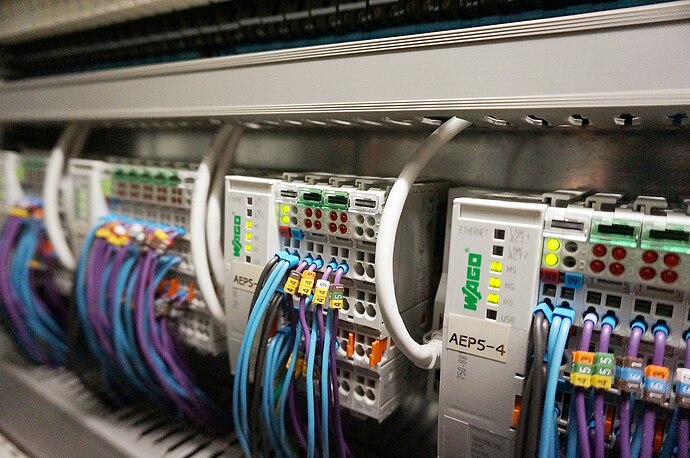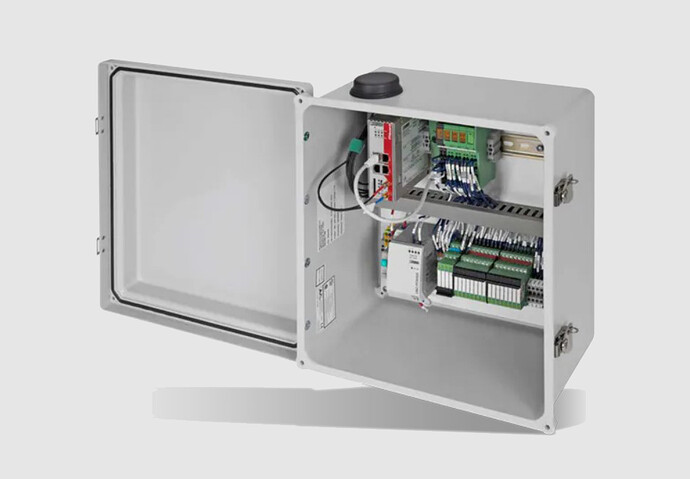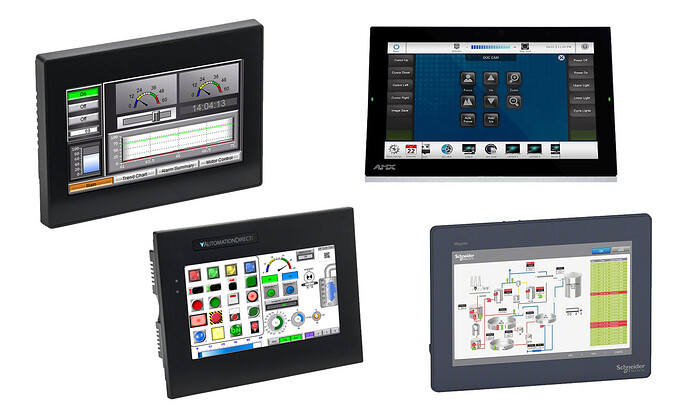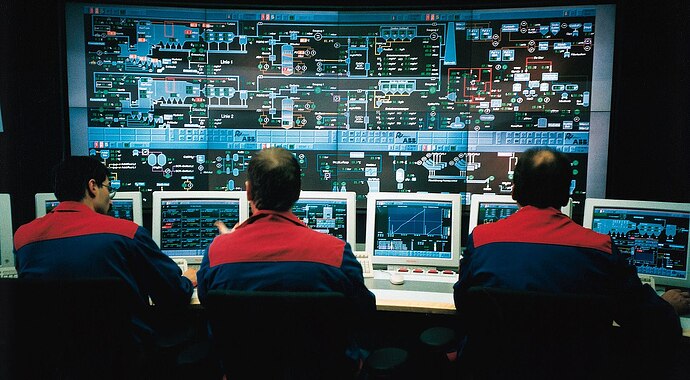There are several different types of communication hardware used in industrial automation and control systems. Each device works to monitor and control processes in various industries such as manufacturing, power generation, oil and gas, and water treatment.
These technologies help improve efficiency, accuracy, and safety in industrial operations by providing real-time data, automation capabilities, and intuitive interfaces for operators to interact with.
Programmable Logic Controller (PLC)
A PLC, or Programmable Logic Controller, is a specialized computerized device used in industrial automation. It is designed to monitor inputs, make decisions based on programmed logic, and control outputs to automate various processes and machinery.
PLCs are widely used in industries such as manufacturing, power generation, and oil and gas. They are designed to withstand harsh environments and are capable of operating reliably in high temperatures, humidity, and vibration.
Programmable Logic Controller Example. Photo: Wikimedia.
The key components of a PLC include a central processing unit (CPU), input modules to receive signals from sensors and switches, output modules to control actuators and devices, and a programming interface to create and modify the logic.
PLCs are programmed using specialized software that allows users to create ladder logic diagrams or use programming languages such as ladder diagram (LD), function block diagram (FBD), or structured text (ST). The programs define the behavior and functionality of the PLC, specifying how inputs are processed, decisions are made, and outputs are controlled.
Remote Terminal Unit (RTU)
A Remote Terminal Unit (RTU) is a device used in industrial automation and control systems to gather data from sensors, switches, and other field devices, and transmit that data to a central control system. RTUs are typically installed at remote locations or sites where direct monitoring and control are required.
The primary function of an RTU is to interface with various field devices and collect data on parameters such as temperature, pressure, level, flow rate, voltage, and current. This data is then transmitted to a supervisory system, such as a SCADA (Supervisory Control and Data Acquisition) system, for monitoring, control, and analysis.
Example of a small Remote Terminal Unit. Photo: Mouser.
RTUs are equipped with multiple input and output channels, allowing them to interface with a wide range of sensors and actuators. They can communicate with various types of field devices, such as pressure transducers, temperature sensors, motor starters, circuit breakers, and more.
RTUs may also have built-in analog-to-digital converters (ADCs) and digital-to-analog converters (DACs) to convert analog signals to digital format and vice versa. They facilitate the seamless integration of field devices with the central control system, enhancing operational efficiency, minimizing downtime, and ensuring the safety and reliability of critical processes.
RTUs are designed to operate reliably in harsh environments, including extreme temperatures, high humidity, and electrical noise. They are typically housed in rugged enclosures to protect them from environmental factors.
Human-Machine Interface (HMI)
A Human-Machine Interface (HMI) is a technology that allows humans to interact with machines or systems. It typically includes a graphical user interface (GUI) that enables users to control and monitor the operation of the machine or system.
Examples of Human Machine Interface. Photo: Various.
HMIs are commonly used in various industries, including electrical power distribution systems, to provide operators with real-time information and control over the equipment. They can be in the form of touch screens, buttons, keyboards, or other input devices, and they often display data such as voltage levels, current readings, alarms, and status indicators.
The HMI acts as a bridge between the user and the machine, facilitating efficient and intuitive control and monitoring.
Intelligent Electronic Device (IED)
An IED is a microprocessor-based device that is used for controlling, monitoring, and protecting electrical power systems.
These devices are typically installed at various points within the power system, such as substations or switchgear, and are capable of performing a wide range of functions, including fault detection and isolation, voltage regulation, and data logging.
IEDs play a crucial role in modern power systems by providing advanced automation and communication capabilities, improving system reliability and efficiency. Some examples include: Relays, Power Monitors, Automatic Transfer Switches (ATS), and Digital Fault Recorders.
Supervisory Control and Data Acquisition (SCADA)
SCADA stands for Supervisory Control and Data Acquisition. It is a system used in industrial automation to monitor, control, and gather data from various processes. SCADA systems are commonly used in industries such as power generation, oil and gas, water treatment, and manufacturing.
The main components of a SCADA system include Supervisory computers, Remote terminal units (RTUs), Communication infrastructure, and Human-machine interface (HMI) components.
SCADA Control Room Example. Photo: Wikimedia.
SCADA systems offer several advantages, including real-time monitoring, centralized control, data logging, historical data analysis, and alarm management. They help improve efficiency, safety, and reliability in industrial processes by providing operators with valuable information and allowing for remote control and automation.
SCADA systems can monitor and control various parameters such as temperature, pressure, flow rate, voltage, and more. They enable operators to quickly identify and respond to abnormalities, potential faults, or emergencies, reducing downtime and improving overall productivity.
Data collected by SCADA systems can be stored in databases for further analysis, trending, and reporting. This data can help identify patterns, optimize processes, and make informed decisions for maintenance and optimization. SCADA systems also play a crucial role in ensuring the safety of personnel and equipment by providing real-time alarm notifications for abnormal conditions or critical events.




